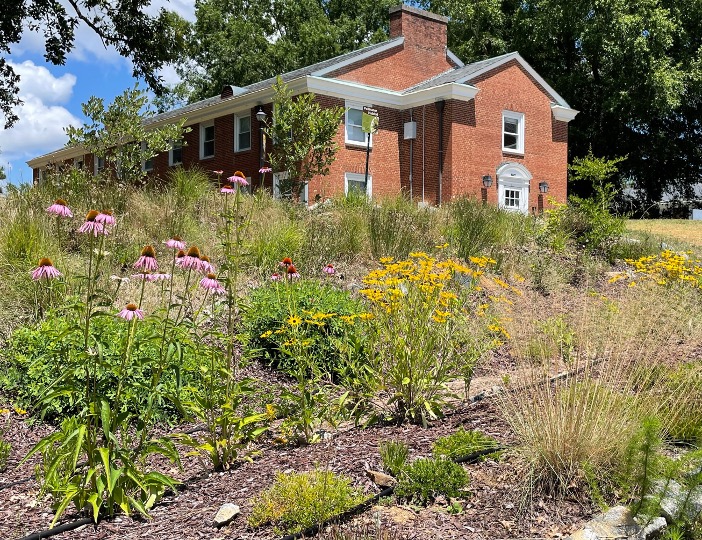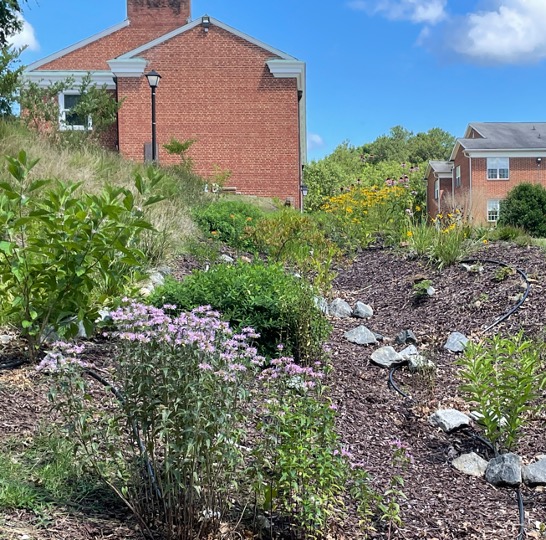By Andrea Thunem
The annual meeting of NCNPS will offer a tour of a native plant rain garden that has improved stormwater runoff, an area that is on campus at Pfeiffer University where the June 11 meeting will take place. In addition to the tour, the event will feature a native plant sale and auction, and a picnic lunch. All Society members are welcome and must register by June 3 to attend.
The rain garden was designed and planted in Spring 2020 by Dr. Carrie DeJaco, associate professor of biology and environmental science at the school, and her students in the school’s reconciliation ecology course. An interview with Dr. DeJaco, the creative force behind the rain garden’s creation, was published in the school’s The Falcon Connection April 2022 e-newsletter titled “Students Leading Ecosystem Restoration at Pfeiffer.”
The NC Native Plant Society had our own conversation with Carrie. Here are some takeaways from that interview.
When you first joined Pfeiffer, what did you see about how their developed land partnered with their natural environment? When I first began working at Pfeiffer University in 2017, I began to see that, as in many places still, there were a good number of invasive plants taking hold in the riparian areas along the creek that runs through campus.

That semester I was teaching Intro to Environmental Science and, since invasive plants are an environmental issue, I thought it would be a perfect opportunity to combine some “hands-on learning” about invasive plants with a bit of a service project on campus.
How did the idea for a rain garden begin? One of our core courses is about reconciliation ecology. It was while I was preparing to teach this course that I discussed with the director of facilities a few places on campus for the class to take on as a hands-on learning opportunity.
The area we decided upon was along a sidewalk near the Harris Science Building— there was a long ditch into which rainwater would drain off a slope that had been lined with informal riprap to prevent erosion. While the ditch was functional for its purposes, it was not an attractive sight for students to walk by every day.
A Ditch Became a Rain Garden

The students in the reconciliation ecology course in Spring 2020 installed a rain garden for the ditch. The rain garden we designed has been a huge success in that, while it still absorbs rainfall and prevents erosion, it now also encourages water infiltration and provides nectar, pollen, and other resources to local wildlife. We currently have 30 native plant species and the area is much more visually appealing than before.
Reconciliation Ecology Aids Developed Land
If we are concerned with conserving biodiversity, and we should be, it all begins by recognizing that a good deal of the land we develop is not actively used by us. This should be uppermost in our minds. We can and should enable other species to use that land. For example, we frequently have wide, expansive lawn areas that we keep neatly mowed while often that space is never actually put to use by us for anything. We could instead plant native trees and other native vegetation in these areas to provide habitat and foraging opportunities for wildlife.
By Andrea Thunem
Native Plant News – Summer 2022

Dr. Carrie DeJaco, Pfeiffer University associate professor of biology and environmental science, is a member of the NCNPS Southern Piedmont Chapter.

